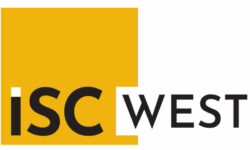Advancing Access Control

Sometimes, Standalone Access Control Devices Are Best Solution
Programmable PIN code locks may be appropriate for certain openings, but not for others. Your customers may want to add credentials such as proximity cards. In this case, you have several options to consider. Among them, there are several standalone electronic locking systems averaging $400 to $1,000 to the customer per door (approximately $240 to $600 dealer cost), including installation.
Electronic card locks have become the subtle workhorses of the security industry, providing features found previously only with online, networked systems. Whatever the credential used, intuitive, user-friendly software can program the locks and/or access trim, from a laptop or PDA.
New users, access points and access privileges can be entered into the system in minutes. With such computer-managed standalone systems, systems integrators can become very creative when customizing their clients’ access control solutions. Multiple openings can be managed with a variety of standalone locking systems that share common software.
Without any network connection, users have the benefits of a networked system at a fraction of the cost. The only concession is that you do not have real-time management of the opening. To change access perimeters, and in some cases user privileges, you will have to reprogram the lock.
With the standalone lock, your customer’s system administrator can easily control both users and access points based on time of day and/or day of week. The lock also retains audit events and reports of access privileges granted or denied, use of a mechanical override and, in some cases, door status.
With a laptop or PDA, the administrator can go to a door, plug the interface cable into the lock and then add or delete users, determine which users can have access to specific doors at specific times throughout the day, and upload audits. If real-time management of the opening is required, then the next move would be to a networked system with hardwired or wirelessly connected readers and locking devices.
In some cases, you can create the networked system and incorporate your customer’s standalone electronic locking devices and databases. Systems that can manage both online and offline devices will enable your customer to realize true return on investment (ROI). This makes the standalone electronic lock an asset that the customer can redeploy.
Today, you can commingle multiple access control technologies in one system. From one database, you can manage online and offline locking systems, integrate other critical security management functions such as CCTV, badging, visitor management and more.
To make the most of what is available today, you need to help customers plan for the future while designing their systems for today. Take a consultative approach. Look to deploy flexible, forward-compa
tible systems. From simple standalone to networked access control, there is a migration path and, in a select few systems, both can coexist.
Build a Foundation for the Future Via the Systems You Deploy Today
When you design an electronic access control system, build it from the door out. Be especially cognizant that customers’ requirements will likely change.
If you design a system that will grow with them, you will be the company they call when it is time to make a change. By deploying versatile systems, you can maximize the effectiveness of multiple security applications. Access transactions, associated video and alarms can be viewed simultaneously, eliminating the need to access multiple systems or flip to alternate screens.
You can include integrated digital video management, visitor management and alarm graphics. Offline and online hardware offerings become uniquely integrated and can include standalone, networked, hardwired and wireless access devices. The access control system world is not one of feast or famine, a choice between strictly mechanical or only networked alternatives.
There is a new generation of electronic locks and access control software offering many options for you to design custom applications for your customers. Such systems can be considered a security asset, built to design and grow, instead of a necessary evil and expense that will become obsolete soon after it is installed.
Felix Mira is the marketing manager for Schlage electronic security in Forestville, Conn., part of Ingersoll Rand (IR) Security Technologies. Mira has also worked for ASSA ABLOY and Compass Technologies. He can be reached at (972) 378-1191 or [email protected].
If you enjoyed this article and want to receive more valuable industry content like this, click here to sign up for our FREE digital newsletters!

Security Is Our Business, Too
For professionals who recommend, buy and install all types of electronic security equipment, a free subscription to Commercial Integrator + Security Sales & Integration is like having a consultant on call. You’ll find an ideal balance of technology and business coverage, with installation tips and techniques for products and updates on how to add to your bottom line.
A FREE subscription to the top resource for security and integration industry will prove to be invaluable.













